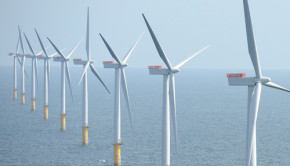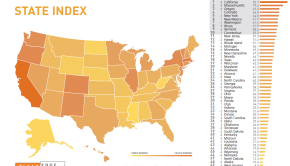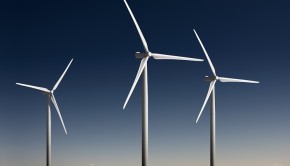9 Companies Focus On Energy Storage With New York State
November 13th, 2014 by Jake Richardson
The New York State Energy Research and Development Authority (NYSERDA) is supporting research and development in the field of energy storage by partnering with nine companies. Research is always important, but sometimes it doesn’t translate to technology that gets into the hands of consumers. The New York state program is designed to make sure that happens. The point is not only to conceive of new clean technologies, but also to create prototypes and then develop them into real-world applications.
Advanced battery systems can help store energy generated by solar and wind power to help stabilize the grid. They can also be used by businesses and homeowners to avoid peak demand charges if used in partnership with solar PV systems.
And, of course, they can be used in electric vehicles, which are much more efficient than gasoline-powered vehicles.
One of the companies being supported by NYSERDA, Raymond, intends to try out lithium-ion batteries to increase running time and efficiency in its electric lift trucks.
Graphenix is a startup that is working on carbon electrodes for ultracapacitors. Its work may result in increased energy efficiency that improves hybrid vehicles, and also grid performance enhancements.
Combined Energies is working on extending the lives and charge duration of electrochemical batteries. The company’s technology is again relevant to EVs.
Hollingsworth & Vose have been working on separators in lead-acid batteries to make them more productive. They have been doing this work for decades.
DNV GL is working on separators for lithium-ion batteries in order to reduce the already low risk of fires in them. Automatically extinguishing the few fires that do occur is another possibility the company is exploring.
Custom Electronics is developing plans and a prototype for a high-voltage graphene-based electrolytic capacitor. Electrical equipment performance can be enhanced by its technology.
Lionano is working on a nano-engineered anode material for lithium batteries. Enhanced battery performance has been demonstrated by the company’s research, such as extended battery life.
Bettergy is developing an affordable, environmentally friendly zinc-based battery. Its working life could be 20 years, which is much longer than other battery types.
Eonix is developing next-generation electrolytes that can store 30% more energy, thereby improving ultracapacitors.
Of course, supporting local companies is good for the economy, and Governor Cuomo’s goal is just that.
“The businesses receiving these awards — all members of the NY-BEST consortium — are working on the next-generation of technology to reduce power needs, support more energy-efficient vehicles and electronic devices, and make greater use of renewable resources,” explained John B. Rhodes, President and CEO of NYSERDA.
Energy storage seems to be the next phase of exploration and growth in the alternative energy field. Eventually, it may become as common as standard power generating technology.
Related:
The Megawatt Block Program: Setting New York Solar Up for Success
214 MW Of New Solar PV Headed To New York State Thanks To New Funding Via NY-SUN
New York State’s Energy Development Authority Unveils $5 Billion Renewables Vision
Is New York State Building The Smartest Grid In America?
NYSERDA Awards $2M to 8 Projects to Develop Energy Storage
Keep up to date with all the hottest cleantech news by subscribing to our (free) cleantech newsletter, or keep an eye on sector-specific news by getting our (also free) solar energy newsletter, electric vehicle newsletter, or wind energy newsletter.
-
Jenny Sommer
-
Matt
-
Jenny Sommer
-
-
Bob_Wallace
-
Jenny Sommer
-
Bob_Wallace
-
Bob_Wallace
-
Jenny Sommer
-
Jenny Sommer
-
Bob_Wallace
-
-
-
-


























